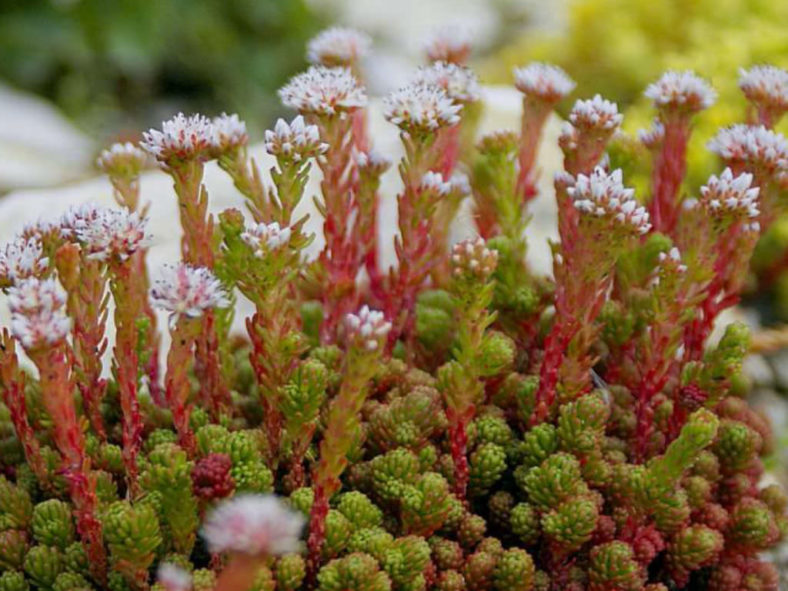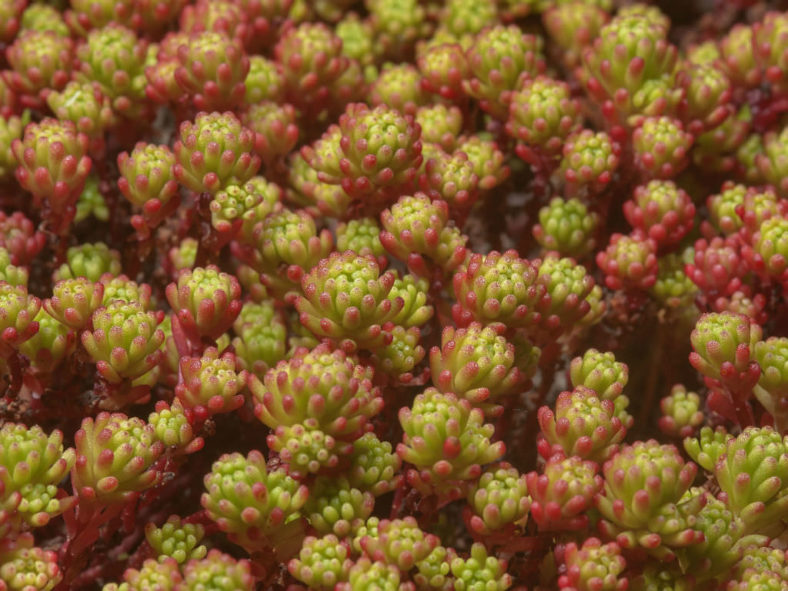Scientific Name
Sedum lydium Boiss.
Common Name(s)
Least Stonecrop, Mossy Sedum, Mossy Stonecrop
Scientific Classification
Family: Crassulaceae
Subfamily: Sempervivoideae
Tribe: Sedeae
Genus: Sedum
Etymology
The specific epithet "lydium" (pronounced "LID-ee-um") means "belonging to or derived from Lydia" and refers to Lydia, an Iron Age kingdom in western Anatolia (Asia Minor), modern-day Turkey (Türkiye), where this species originates.
Origin
Sedum lydium is native to western Turkey. It grows in damp, mossy places on mountains.
Description
Sedum lydium is a succulent groundcover with creeping and rooting branches and perennating, sterile rosettes of green leaves that become red-flushed in drought and during the fall and winter. It can grow up to 4 inches (10 cm) tall. The leaves are cylindrical and can measure up to 0.25 inches (0.6 cm) in length.
In summer, dense clusters of flowers appear on short leafy stems. The flowers are star-shaped, 5-merous, and white in color with a red midvein on the petals.

Hardiness
USDA hardiness zones 5a to 9b: from -20°F (-28.9°C) to 30°F (-1.1°C).
How to Grow and Care
When growing Sedums, keep in mind that these plants need very little attention or care. They thrive in conditions that many other plants do, but will also do just as well in less hospitable areas. They are ideal for that part of your yard that receives too much sun or too little water to support the growth of other plants. Sedum's common name is Stonecrop because many gardeners joke that only stones need less care and live longer.
Sedum is easily planted. For shorter varieties, simply laying the plant on the ground where you want it to grow is usually enough to initiate growth there. The plant will send out roots from wherever the stem touches the ground and the root itself. If you would like to ensure that the plant starts growing there, you can add a very thin layer of soil over the plant.
You can break off one of the stems for taller varieties and push it into the ground where you want to grow it. The stem will root very easily, and a new plant will be established in a season or two.
Learn more at How to Grow and Care for Sedum.
Links
- Back to genus Sedum
- Succupedia: Browse succulents by Scientific Name, Common Name, Genus, Family, USDA Hardiness Zone, Origin, or cacti by Genus
Photo Gallery
Click on a photo to see a larger version.


